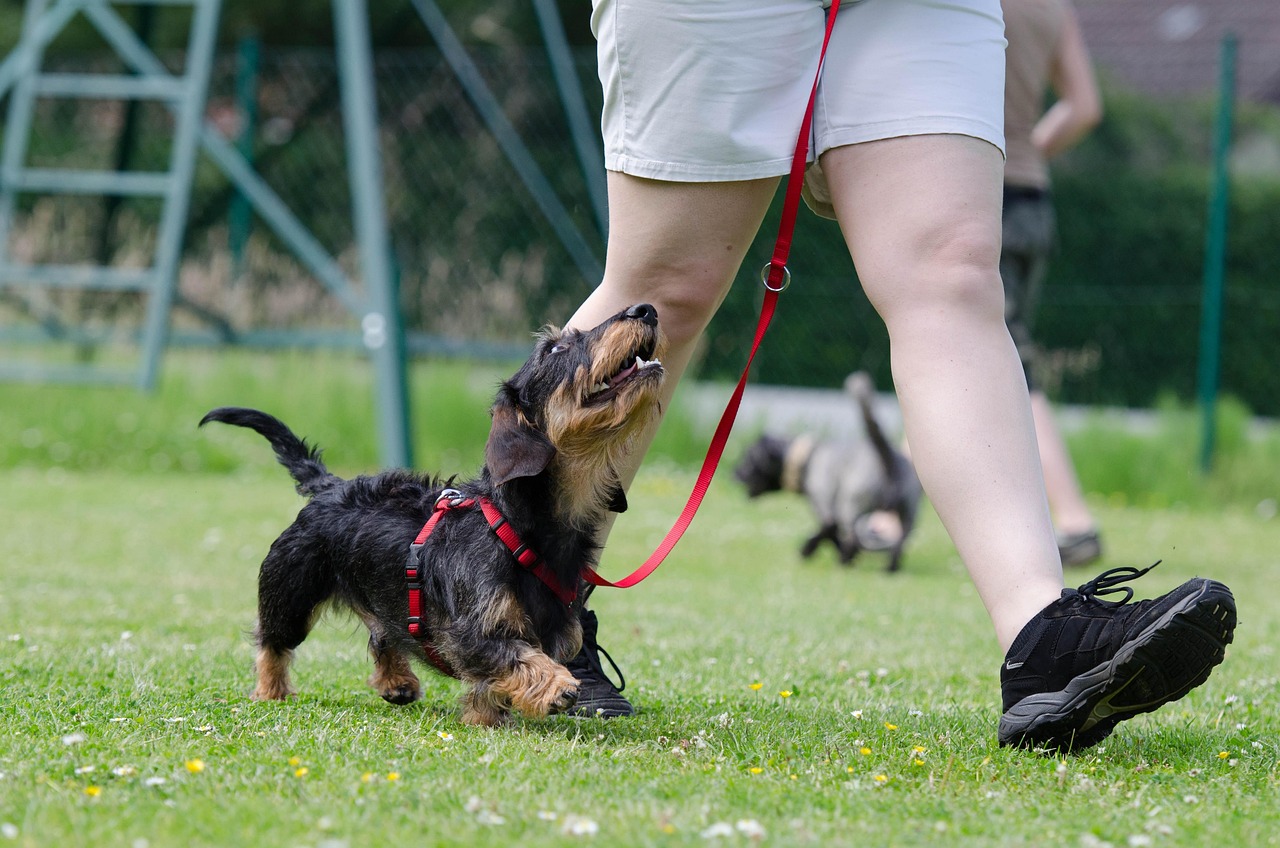Dachshund separation anxiety can be a challenging issue for many dog owners. This condition occurs when your beloved dachshund becomes overly anxious when left alone, leading to a range of emotional and behavioral problems. Understanding the nuances of this anxiety is crucial for providing the best care for your furry friend. In the upcoming sections, we will explore the signs and causes of separation anxiety in dachshunds, along with effective tips to help your dog cope. We’ll also look into creating a safe space, training techniques, and the importance of routine. By building a strong bond and knowing when to seek professional help, you can make a significant difference in your dachshund’s well-being and happiness.

Understanding Dachshund Separation Anxiety
Dachshunds are known for their playful and loving nature, but they can also experience separation anxiety. This condition occurs when a dog becomes stressed or anxious when left alone. Understanding this issue is crucial for any Dachshund owner.
Separation anxiety in Dachshunds can manifest in various ways. It is essential to recognize the signs early to help your furry friend. Common behaviors include:
- Barking or howling when left alone
- Destructive behavior, such as chewing furniture or digging
- Excessive drooling or panting
- Attempts to escape from the home or yard
- Changes in appetite or sleeping patterns
Understanding the root causes of separation anxiety is also vital. Dachshunds are naturally social animals and can become overly attached to their owners. Factors such as changes in environment, traumatic experiences, or even lack of socialization can contribute to this condition.
To help your Dachshund cope, it is important to create a routine and provide a safe space for them. This can include a cozy bed, toys, and calming products designed for anxiety relief. Training techniques can also be beneficial in reducing anxiety levels.
As a dedicated owner, building a strong bond with your Dachshund through regular interaction and positive reinforcement is essential. This connection can help alleviate feelings of anxiety and make them feel more secure when you are away.
In conclusion, understanding Dachshund separation anxiety is the first step in helping your pet live a happier, healthier life. By recognizing the signs and addressing the underlying causes, you can create a supportive environment for your beloved companion.

Signs Your Dachshund Is Experiencing Anxiety
Recognizing the signs of anxiety in your Dachshund is crucial for providing the support they need. Here are some common indicators:
- Excessive Barking: If your Dachshund barks more than usual, it may be a sign of anxiety.
- Destructive Behavior: Chewing furniture or digging can indicate stress or anxiety.
- Pacing: A dog that cannot settle down and keeps moving around may be feeling anxious.
- Hiding: If your Dachshund seeks out small spaces or hides, it could be a sign of anxiety.
- Changes in Appetite: A sudden increase or decrease in eating habits can indicate emotional distress.
- Excessive Licking or Grooming: This behavior can be a coping mechanism for anxiety.
- Shaking or Trembling: Physical signs like shaking can indicate fear or anxiety.
- Withdrawal: If your Dachshund becomes less social or avoids interaction, it may be feeling anxious.
Being aware of these signs can help you take action to support your furry friend and improve their well-being.
Causes of Separation Anxiety in Dachshunds
Separation anxiety in Dachshunds can stem from various factors. Understanding these causes is essential for addressing the issue effectively.
- Previous Trauma: Dachshunds who have experienced abandonment or traumatic events may develop anxiety when left alone.
- Change in Environment: Moving to a new home or changes in the household can trigger anxiety in sensitive dogs.
- Lack of Socialization: Insufficient exposure to different environments and people can lead to anxiety when faced with new situations.
- Over-Attachment: Some Dachshunds form strong bonds with their owners, making it hard for them to cope when separated.
- Age: Puppies and older dogs may be more prone to anxiety due to their developmental stages or health issues.
- Routine Disruption: Changes in daily routines can unsettle Dachshunds, leading to feelings of insecurity.
Recognizing these causes can help owners create a plan to alleviate their Dachshund’s anxiety.
Tips to Help Your Dachshund Cope with Anxiety
Helping your dachshund manage anxiety is essential for their well-being. Here are some effective tips to assist your furry friend:
- Establish a Routine: Dogs thrive on consistency. Create a daily schedule for feeding, walks, and playtime. This helps your dachshund feel secure.
- Provide a Safe Space: Designate a quiet area where your dachshund can retreat when feeling anxious. Include their favorite blanket or toys to make it cozy.
- Practice Gradual Departures: Start by leaving your dachshund alone for short periods. Gradually increase the time to help them adjust to being alone.
- Use Positive Reinforcement: Reward your dachshund with treats or praise when they remain calm during your departures. This encourages good behavior.
- Engage in Regular Exercise: Physical activity can reduce anxiety. Take your dachshund for walks or play fetch to help them release pent-up energy.
- Consider Calming Products: There are various products available, such as anxiety wraps or calming sprays, that may help soothe your dachshund.
- Provide Mental Stimulation: Engage your dachshund with puzzle toys or training exercises. Keeping their mind active can distract them from anxiety.
- Stay Calm Yourself: Dogs can sense their owner’s emotions. Stay relaxed and positive during times of stress to help your dachshund feel more secure.
By implementing these tips, you can help your dachshund cope with anxiety and create a happier, healthier environment for them.
Creating a Safe Space for Your Dachshund
Creating a safe space for your dachshund is essential for their well-being and comfort. This area should be a place where they can relax, feel secure, and escape from stressors. Here are some tips to help you set up the perfect safe space:
- Choose a Quiet Location: Select a spot in your home that is away from loud noises and distractions. This could be a corner of a room or a separate room entirely.
- Comfortable Bedding: Provide soft and cozy bedding. A comfortable dog bed or blanket can make a big difference in how secure your dachshund feels.
- Familiar Items: Include familiar toys and items that smell like you. This can help your dachshund feel more at home in their safe space.
- Access to Water: Ensure that your dachshund has easy access to fresh water. Staying hydrated is important, especially when they are feeling anxious.
- Safe Toys: Provide toys that are safe and engaging. Chew toys or puzzle toys can keep them occupied and help reduce anxiety.
- Calm Environment: Use calming music or white noise machines to create a soothing atmosphere. This can help drown out any sudden noises that may startle your dachshund.
Remember, a safe space is not just about physical comfort; it’s also about emotional security. Spend time with your dachshund in this area to help them associate it with positive experiences. Over time, they will learn to see it as their personal sanctuary.
Training Techniques to Reduce Separation Anxiety
Training your Dachshund to cope with separation anxiety can be a gradual process. Here are some effective techniques to help your furry friend feel more secure when you are away:
1. Gradual Desensitization
Start by leaving your Dachshund alone for short periods. Gradually increase the time you are away. This helps them get used to your absence.
2. Positive Reinforcement
Whenever your Dachshund remains calm while you are gone, reward them with treats or praise. This encourages them to associate your departures with positive experiences.
3. Practice Short Departures
- Leave the house for a few minutes and return.
- Repeat this several times a day.
- Slowly increase the duration of your absences.
4. Create a Departure Routine
Establish a consistent routine before you leave. This can include putting on your shoes, grabbing your keys, or saying a specific phrase. This helps your Dachshund understand that you will return.
5. Use Interactive Toys
Provide your Dachshund with engaging toys that can keep them occupied while you are away. Puzzle toys or treat-dispensing toys can be great options.
6. Stay Calm and Confident
Your Dachshund can sense your emotions. When leaving, try to remain calm and avoid lengthy farewells. A quick, cheerful goodbye can help ease their anxiety.
7. Consider Crate Training
If done correctly, crate training can provide a safe space for your Dachshund. Make the crate a positive environment with comfortable bedding and toys.
Implementing these training techniques can significantly help reduce your Dachshund’s separation anxiety. Remember to be patient and consistent as your pet learns to adjust to your absences.

The Importance of Routine for Your Dachshund
Establishing a consistent routine for your Dachshund is crucial for their well-being. Routines can provide a sense of security and help reduce anxiety. Here are some key reasons why having a routine is beneficial:
- Predictability: Dogs thrive on predictability. A set schedule for meals, walks, and playtime helps your Dachshund know what to expect.
- Behavior Management: Regular routines can help manage your dog’s behavior. When they know when to expect activities, they are less likely to engage in destructive behaviors.
- Training Reinforcement: Incorporating training sessions into your routine reinforces good behavior. Consistent commands and cues will help your Dachshund learn more effectively.
- Physical and Mental Stimulation: A routine that includes exercise and playtime ensures your Dachshund receives necessary physical activity and mental engagement.
- Health Monitoring: Regular feeding and activity times allow you to monitor your dog’s health closely. Any changes in appetite or energy levels can be noticed quickly.
To create an effective routine, consider the following:
- Set specific times for feeding, walking, and playing.
- Include training sessions at regular intervals.
- Ensure your Dachshund has a designated time for rest and relaxation.
By establishing a routine, you can help your Dachshund feel more secure and content. This stability can significantly improve their overall happiness and reduce anxiety levels.
When to Seek Professional Help for Anxiety
Recognizing when your dachshund needs professional help is crucial for their well-being. While some anxiety can be managed at home, there are times when expert intervention is necessary.
- Persistent Symptoms: If your dachshund shows signs of anxiety that last for an extended period, it may be time to consult a professional. Symptoms like excessive barking, destructive behavior, or refusal to eat can indicate deeper issues.
- Severe Reactions: If your dog experiences severe panic attacks or extreme fear in certain situations, seeking help is important. This can include trembling, hiding, or aggression towards people or other animals.
- Impact on Daily Life: If your dog’s anxiety affects their daily activities, such as going for walks or interacting with family members, professional assistance can provide valuable strategies to improve their quality of life.
- Inadequate Progress: If you’ve tried various techniques and your dachshund’s anxiety persists, a professional can assess the situation and suggest tailored solutions.
- Behavior Changes: Sudden changes in behavior can be a sign of anxiety. If your dachshund starts acting differently, it may be beneficial to consult a veterinarian or a certified animal behaviorist.
Remember, seeking help is a proactive step towards ensuring your dachshund’s happiness and health. Professional guidance can lead to effective treatment plans that address their specific needs.

Choosing the Right Products for Anxiety Relief
When it comes to helping your furry friend cope with anxiety, choosing the right products is essential. Here are some options to consider:
- Calming Treats: These treats are specially formulated with ingredients like chamomile and lavender to promote relaxation. Look for products that are vet-approved.
- Thundershirts: A Thundershirt provides gentle, constant pressure to help alleviate anxiety. It can be particularly effective during stressful situations like thunderstorms or fireworks.
- Calming Supplements: Supplements containing L-theanine or CBD can help reduce anxiety levels. Always consult with your vet before introducing new supplements.
- Interactive Toys: Engaging your dachshund with toys that stimulate their mind can distract them from anxiety. Look for puzzle toys that challenge them mentally.
- Aromatherapy Diffusers: Using essential oils such as lavender in a diffuser can create a calming environment. Ensure that the oils are safe for pets.
- Music or Sound Therapy: There are products designed to play calming music or sounds that can help soothe anxious dogs.
Remember, every dog is unique, so it may take some time to find the right combination of products that work for your dachshund. Always monitor their response and consult your veterinarian for personalized advice.
Building a Strong Bond with Your Dachshund
Building a strong bond with your Dachshund is essential for a happy and healthy relationship. These adorable dogs are known for their loyalty and affection, and nurturing this bond can lead to a fulfilling companionship.
Spend Quality Time Together
One of the best ways to strengthen your connection is by spending quality time with your Dachshund. Engage in activities that both of you enjoy. Here are some ideas:
- Daily walks: Regular walks provide exercise and an opportunity to explore the world together.
- Playtime: Use toys that your Dachshund loves to keep playtime exciting.
- Training sessions: Teaching new tricks not only stimulates their mind but also builds trust between you.
Positive Reinforcement
Using positive reinforcement is key to building a strong bond. Reward your Dachshund with treats, praise, or affection when they exhibit good behavior. This approach creates a sense of security and encourages them to engage with you.
Understand Their Needs
Every Dachshund has unique needs and preferences. Pay attention to their body language and vocalizations. Understanding what makes them comfortable or anxious will help you respond appropriately, fostering trust and connection.
Establish a Routine
Dogs thrive on routine. Establishing a consistent daily schedule for feeding, walks, and playtime helps your Dachshund feel secure. This predictability strengthens your bond as they learn to rely on you.
Provide Comfort and Security
Creating a safe and comfortable environment is vital. Ensure they have a cozy space to relax and feel secure. This can be a designated bed or a quiet corner of the house. A sense of safety allows your Dachshund to bond more deeply with you.
Socialization
Introducing your Dachshund to various environments and other dogs can enhance their social skills. Proper socialization builds confidence and helps them feel more secure in different situations, further strengthening your bond.
Be Patient and Consistent
Building a strong bond takes time and effort. Be patient with your Dachshund as they learn to trust you. Consistency in your actions and training will help them feel more at ease and strengthen your relationship.
In conclusion, investing time and effort into building a strong bond with your Dachshund can lead to a rewarding companionship. By spending quality time together, understanding their needs, and providing a stable environment, you can create a lasting and loving relationship.




